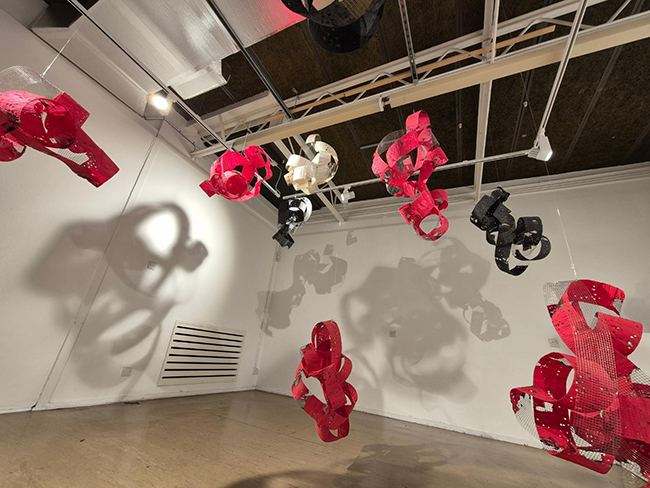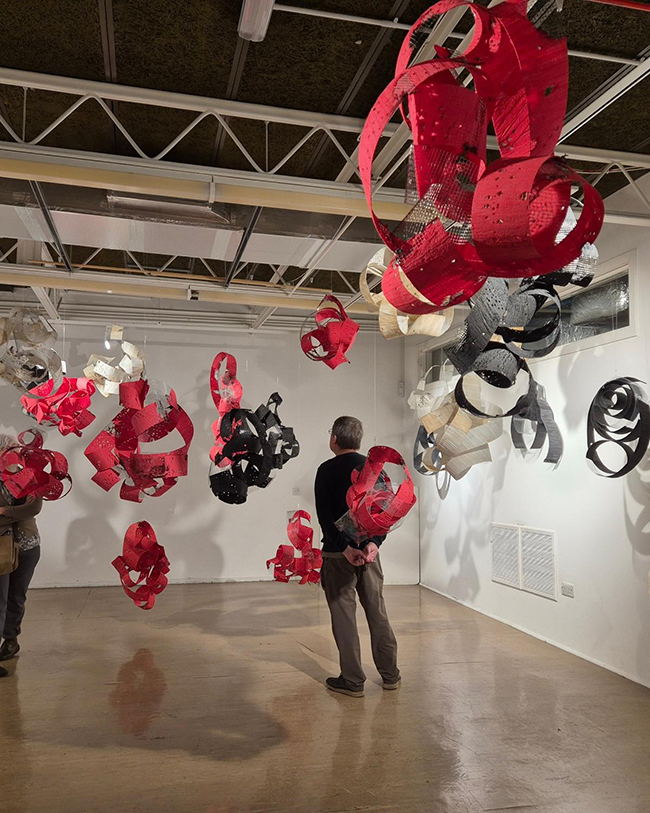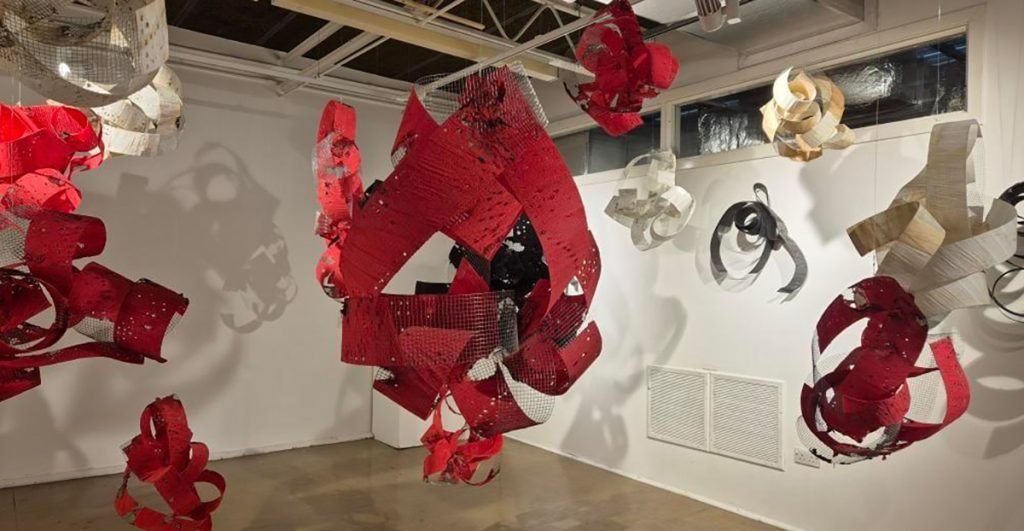Bea Last, a Scottish artist, creates narratives of raw beauty and profound meaning through her distinctive artistic practice. Nestled in the picturesque landscapes of Scotland, Last’s work is a testament to her commitment to the artistic process and her ability to transform recycled, repurposed, found, salvaged, or gifted materials into what she calls “sculptural drawing.” Her creations, abstract in form, serve as windows into both inner and outer landscapes, challenging perceptions and igniting dialogues on conflict, humanitarianism, and the looming climate crisis.

Born in 1963 in Cyprus amidst the early troubles between Greek and Turkish Cypriots, Bea Last’s proximity to conflict deeply influenced her artistic perspective. This tumultuous beginning planted the seeds for her lifelong exploration of themes related to conflict and trauma. Last’s art delves into personal and collective experiences, transforming them into meaningful visual narratives.
Her current project, “Bullets and Bandages,” epitomizes her approach. This installation, housed at the Gracefield Arts Centre in Dumfries, Scotland, is a poignant exploration of conflict and trauma. “Bullets and Bandages” consists of independent sculptural forms that contribute to a larger, cohesive whole. This series reflects Last’s personal response to conflict and humanitarian issues, extending into deeper explorations of the self, childhood trauma, and generational trauma.

The materials she uses—galvanized wire mesh, recycled bandages, biodegradable plastic, and graphite—are chosen for their physicality and symbolic weight. The inclusion of bullet holes adds a stark reminder of the violence and disruption that underpin her themes. The materials are not just tools but also part of the message, conveying themes of healing, fragility, and resilience.
Last’s concept of “sculptural drawing” is both distinctive and deeply personal. This practice involves using materials in a manner that transcends traditional boundaries between drawing and sculpture. Her installations often blur these lines, creating immersive experiences that invite viewers to engage with the work on multiple levels. The repurposing of materials from previous installations reflects her commitment to sustainability and underscores the transient, ever-changing nature of the themes she explores.

Bea Last’s art is a silent rebellion against superficial aesthetics. It is a visual exploration that delves into the fabric of our existence, confronting harsh realities while simultaneously offering a space for reflection and dialogue. Her works are not just to be seen but to be experienced, felt, and pondered upon.
In her abstract forms, Last encapsulates the turmoil and resilience of the human spirit. Each piece is a fragment of a larger narrative, a story told through the interplay of materials and form. Her work challenges viewers to look beyond the surface and engage with the underlying messages of conflict, healing, and transformation.
Growing up in Cyprus during a time of conflict has left an indelible mark on her, shaping her artistic voice and the themes she chooses to explore. Her art becomes a medium through which she processes her experiences and connects with others who have faced similar struggles. The choice of materials in her work is deeply symbolic. The recycled bandages, for instance, not only highlight issues of waste and sustainability but also serve as metaphors for healing and recovery. The bullet holes, stark and unyielding, remind us of the pervasive presence of violence and conflict in our world.
In the serene landscapes of Scotland, Bea Last’s studio becomes a space of transformation. Here, discarded materials find new life, and abstract forms become vessels of deep emotional and social commentary. Last’s art is a journey—one that traverses personal trauma, societal conflict, and the quest for healing. Her approach to art emphasizes the importance of process and progress, with each piece contributing to a larger, ongoing conversation about our world and our place in it.
“Bullets and Bandages” is a work in progress that will culminate in a larger installation, thoroughly documented and professionally photographed to capture its ephemeral nature. This project exemplifies Last’s ability to weave personal and collective narratives into her art. The materials, such as galvanized wire mesh and recycled bandages, are not just chosen for their physical properties but also for their ability to convey deeper meanings.
The project reflects Last’s personal response to conflict and humanitarian issues, extending into explorations of self, childhood trauma, and generational trauma. The bullet holes in her work serve as a stark reminder of the violence and disruption that underpin her themes.
Bea Last’s art is a testament to the power of transformation and the resilience of the human spirit. Through her distinctive practice of sculptural drawing, she creates works that challenge perceptions and ignite dialogues on some of the most pressing issues of our time. Her commitment to sustainability, her ability to repurpose materials, and her focus on themes of conflict, healing, and transformation make her an essential voice in contemporary art. Last’s work is not just to be viewed but to be experienced, inviting us to engage with the deeper narratives that shape our world.


